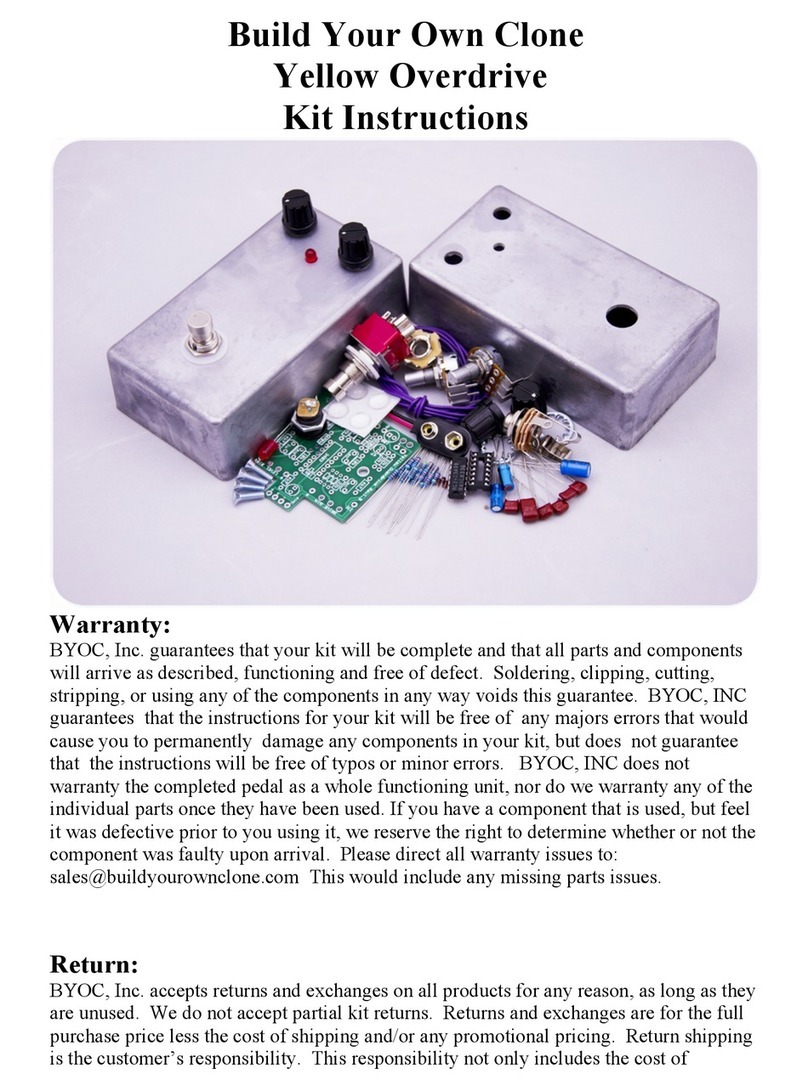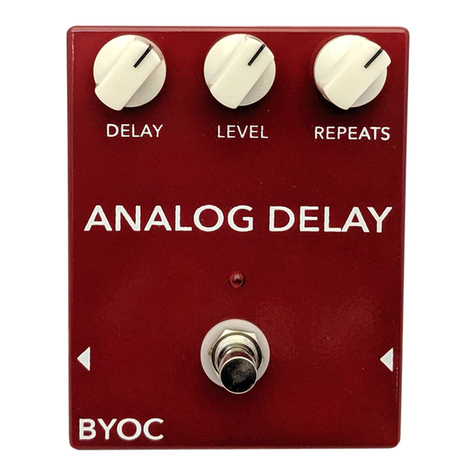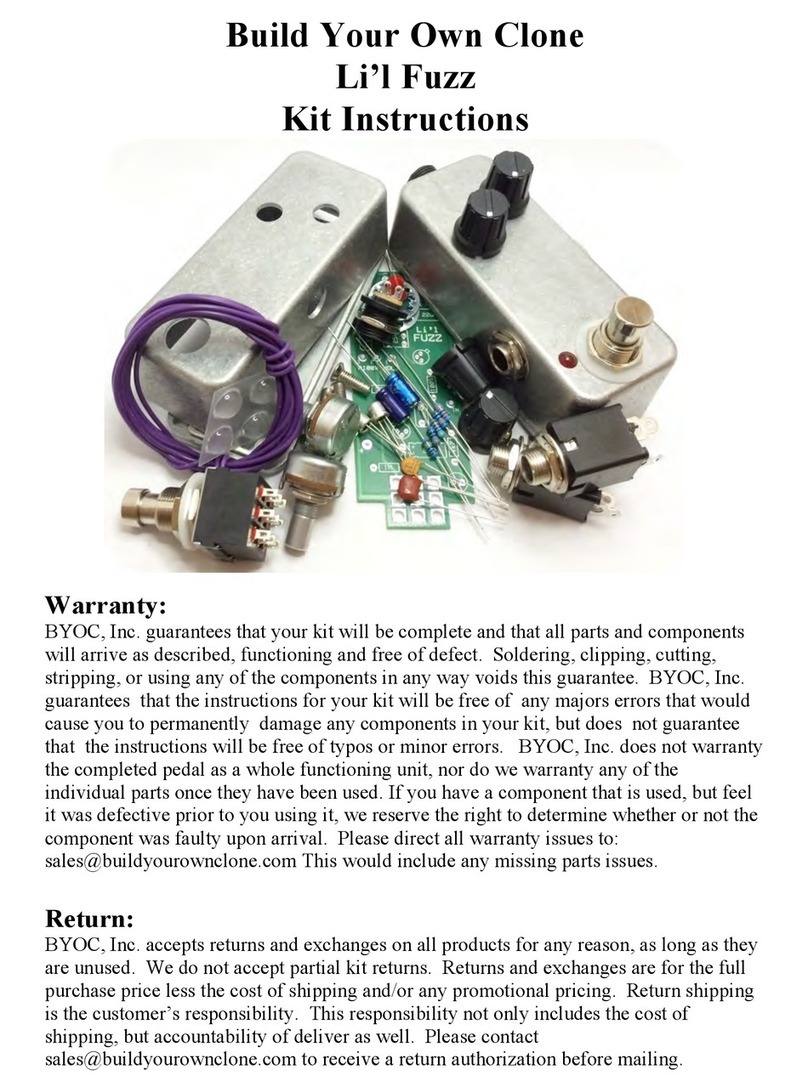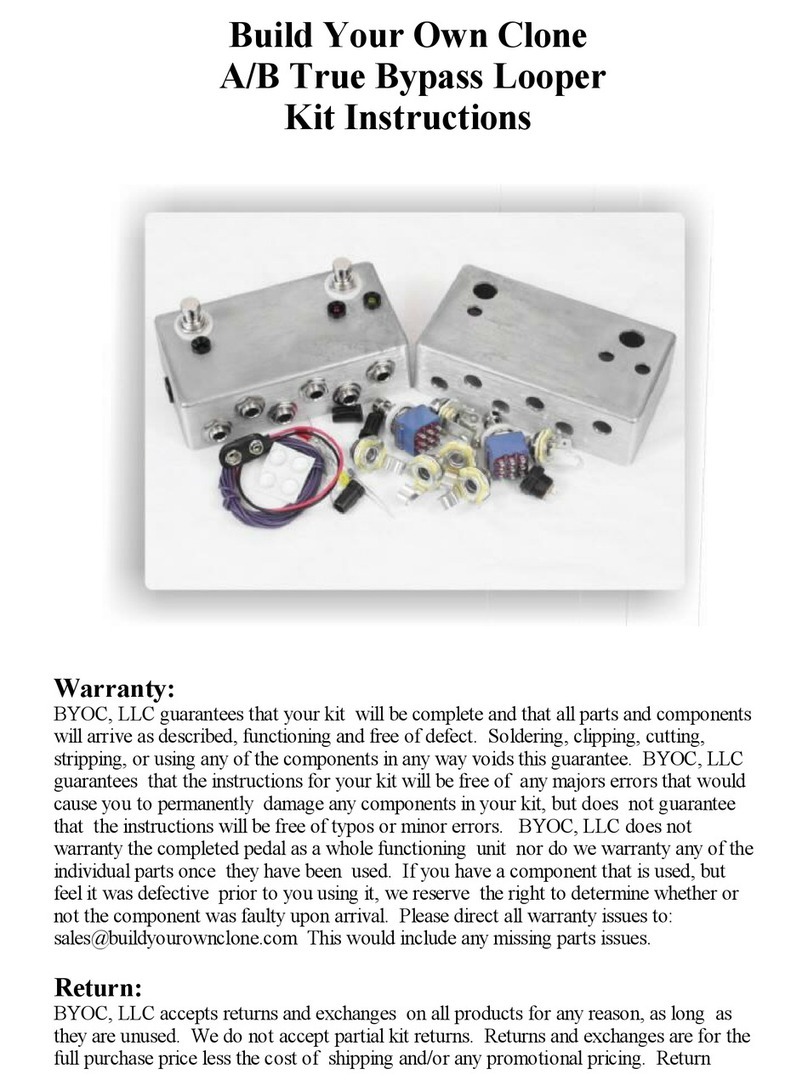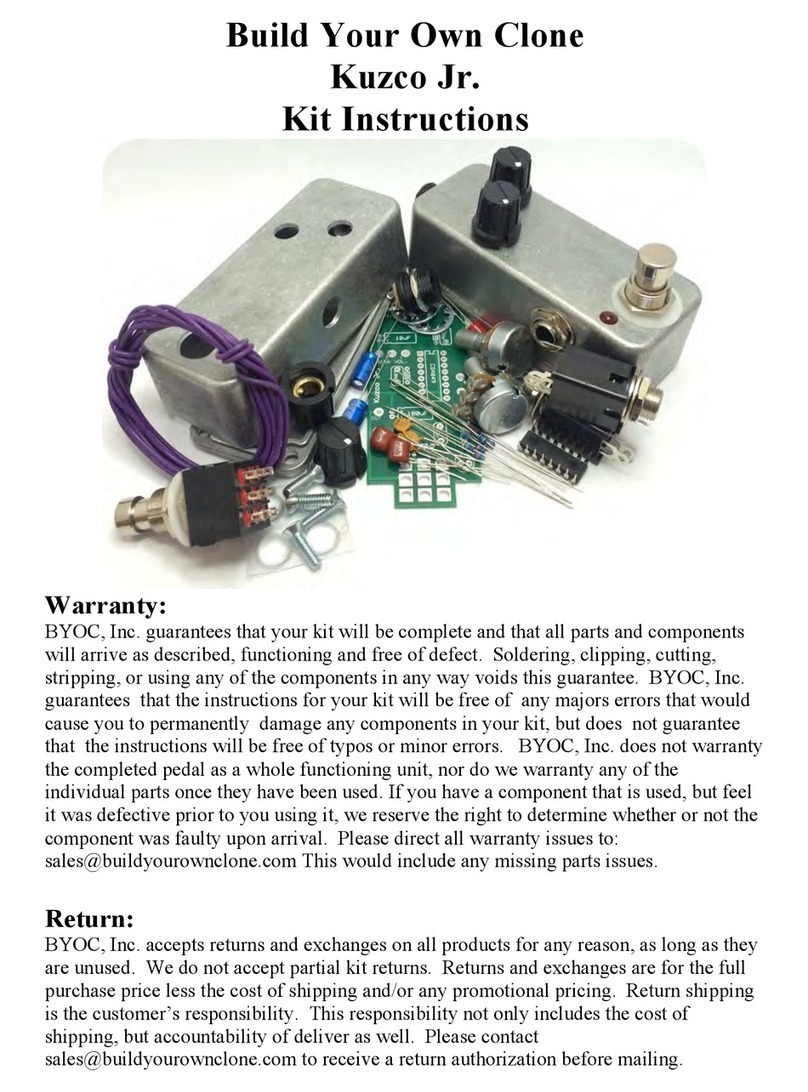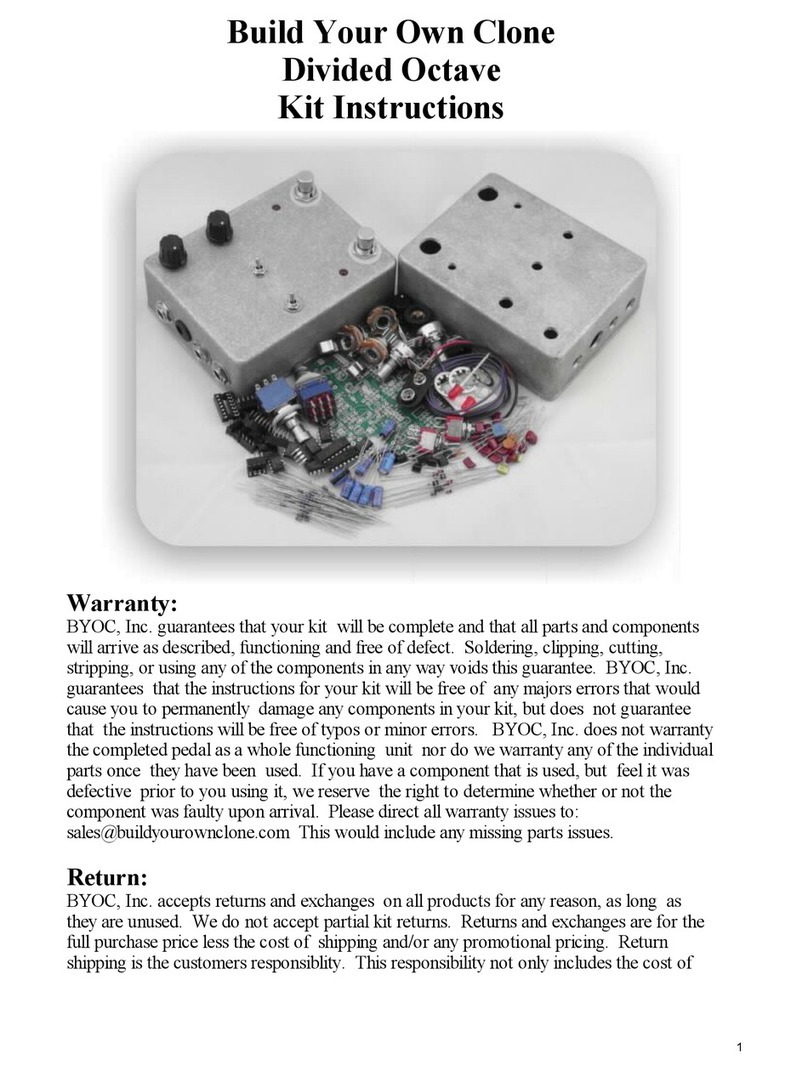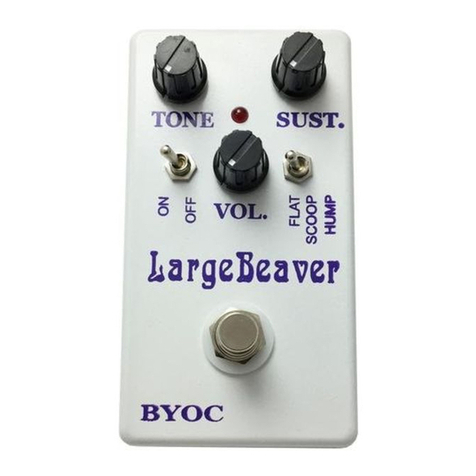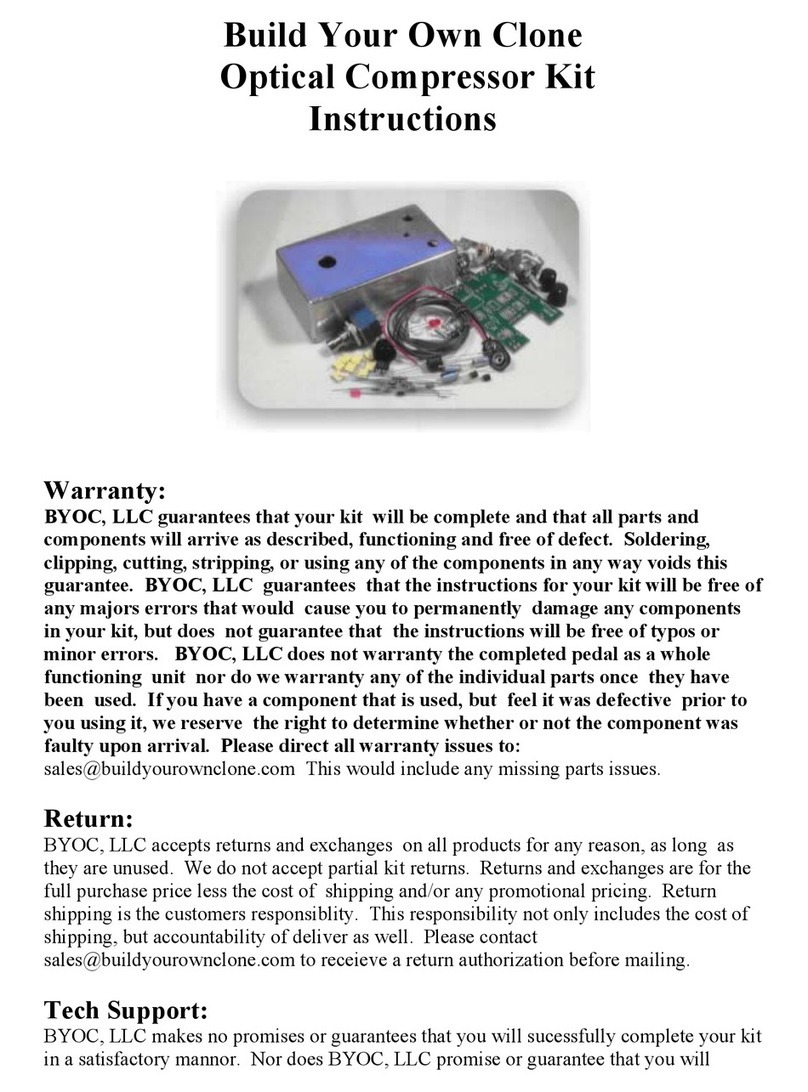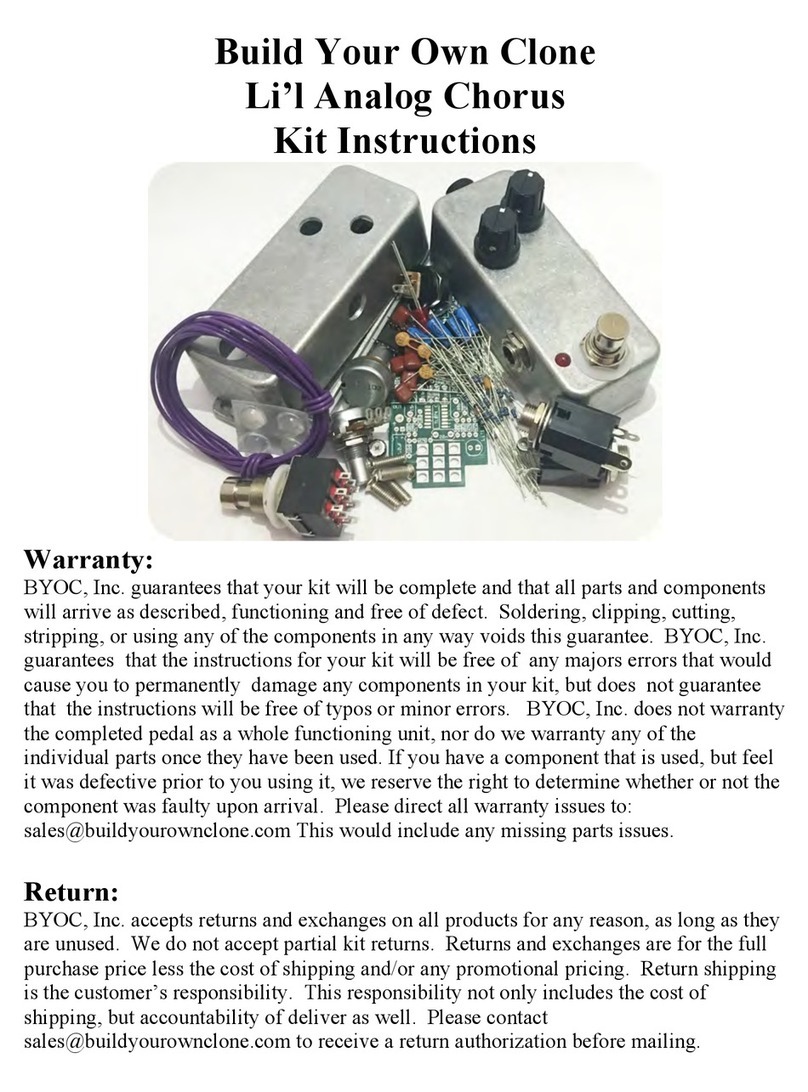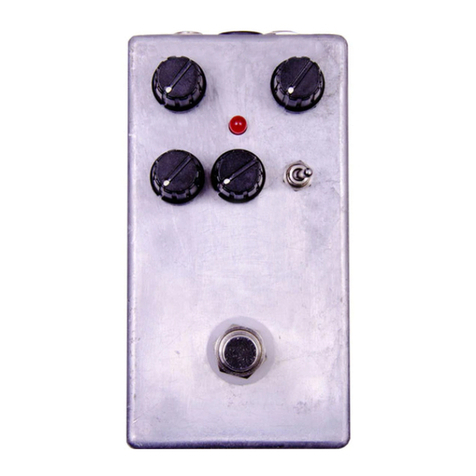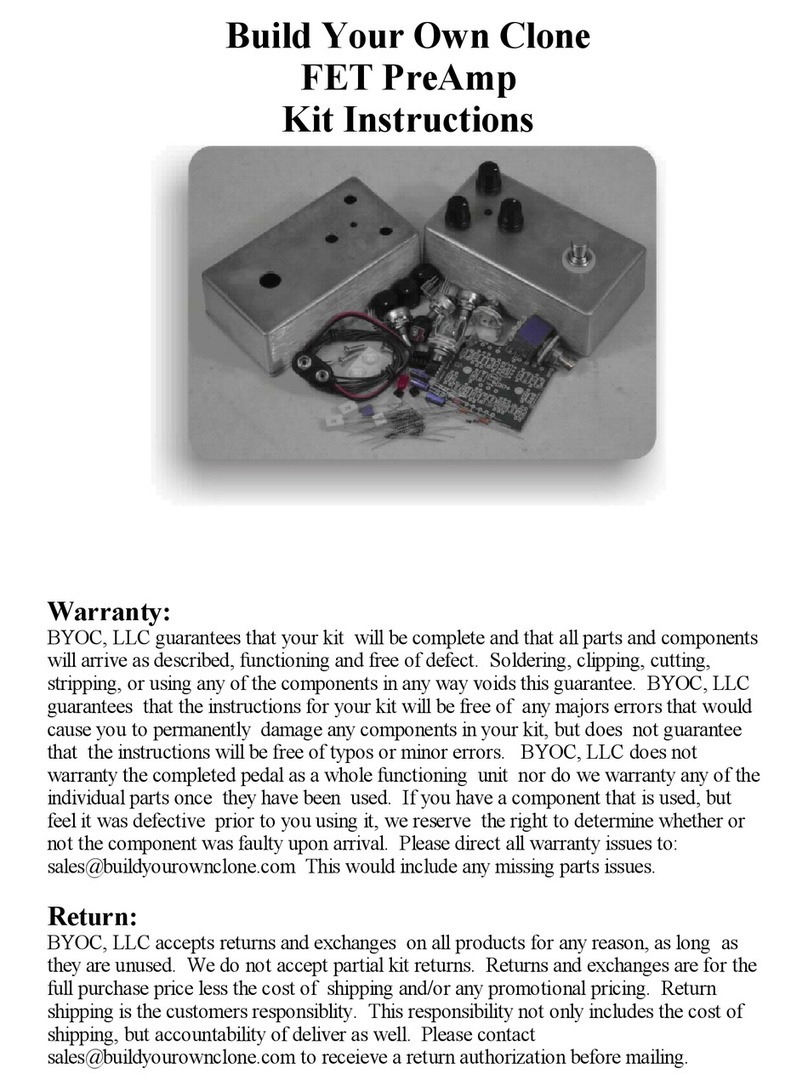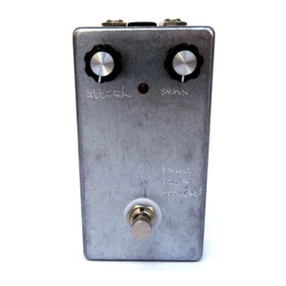Tech
Support:
BYOC, Inc. makes no promises or guarantees that you will successfully complete your
kit in a satisfactory manor. Nor does BYOC, Inc. promise or guarantee that you will
receive any technical support. Purchasing a product from BYOC, Inc. does not entitle
you to any amount of technical support. BYOC, Inc. does not promise or guarantee that
any technical support you may receive will be able to resolve any or all issues you may
be experiencing.
!
That being said, we will do our best to help you as much as we can. Our philosophy at
BYOC is that we will help you only as much as you are willing to help yourself. We
have a wonderful and friendly DIY discussion forum with an entire section devoted to the
technical support and modifications of BYOC kits.
!
www.byocelectronics.com/board
!
When posting a tech support thread on the BYOC forum, please post it in the correct
lounge, and please title your thread appropriately. If everyone titles their threads
“HELP!” then it makes it impossible for the people who are helping you to keep track of
your progress. A very brief description of your specific problem will do. It will also
make it easier to see if someone else is having or has had the same problem as you. The
question you are about to ask may already be answered. Here is a list of things that you
should include in the body of your tech support thread:
1. A detailed explanation of what the problem is. (more than, “It doesn’t work, help”)
2. Pic of the topside of your PCB.
3. Pic of the underside of your PCB.
4. Pic that clearly shows your footswitch/jack wiring and the wires going to the PCB
5. A pic that clearly shows your wiring going from the PCB to the pots and any other
switches(only if your kit has non-PC mounted pots and switches)
6. Is bypass working?
7. Does the LED come on?
8. If you answered yes to 6 and 7, what does the pedal do when it is in the "on" position?
9. Battery or adapter (if battery, is it good? If adapter, what type?)
Also, please only post photos that are in focus.
!
Copyrights:
All material in this document is copyrighted 2014 by BYOC, Inc.



